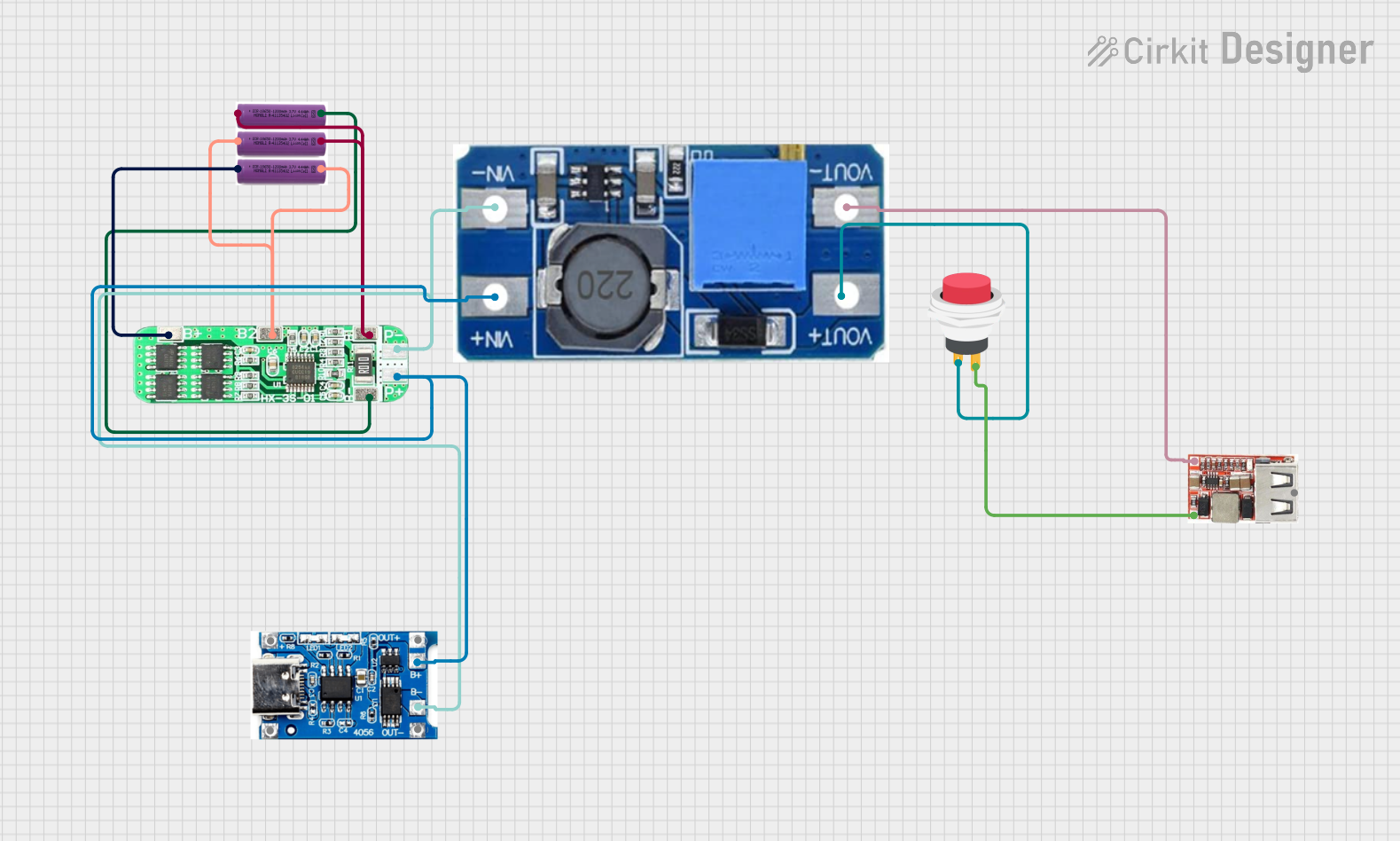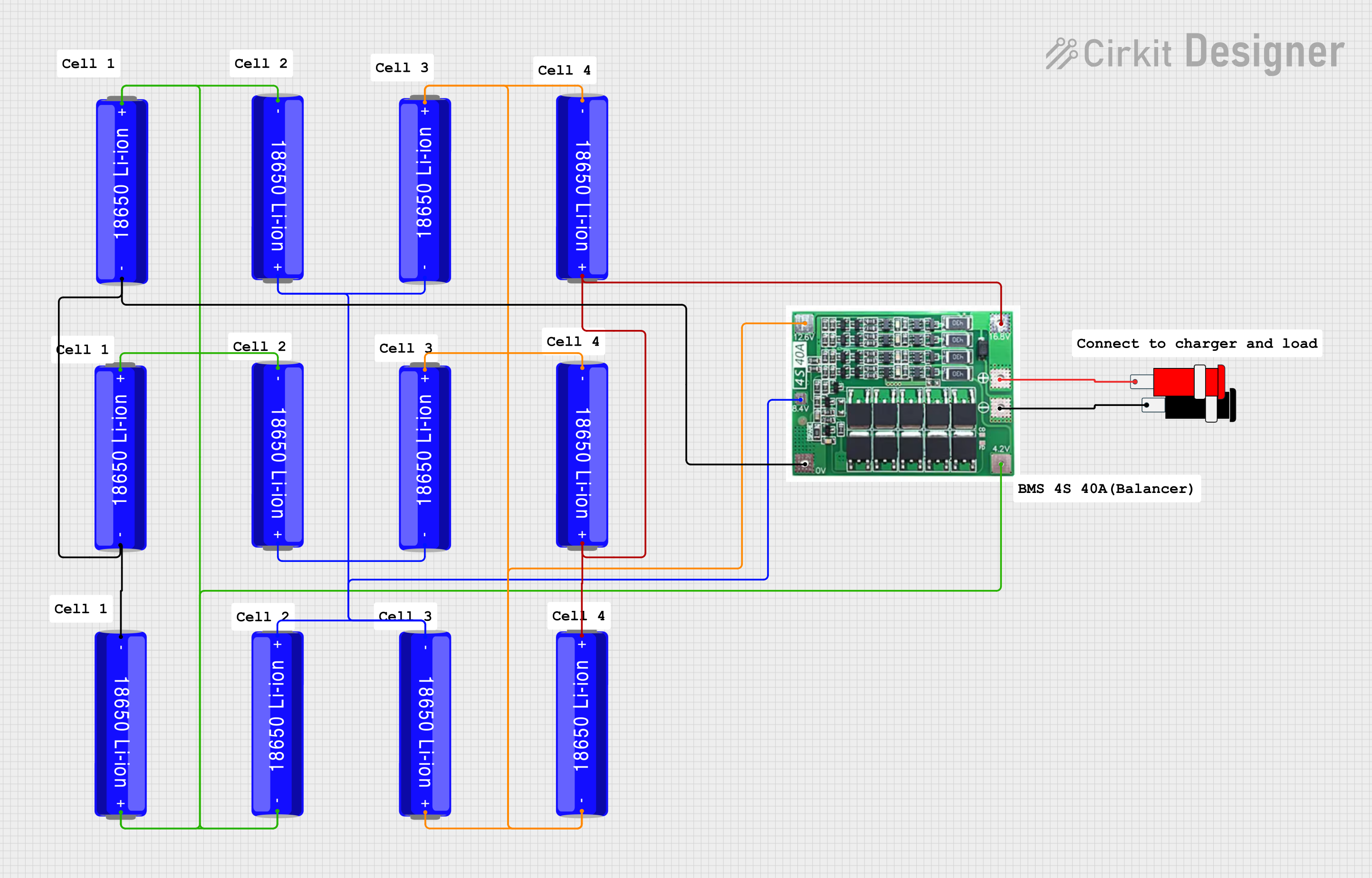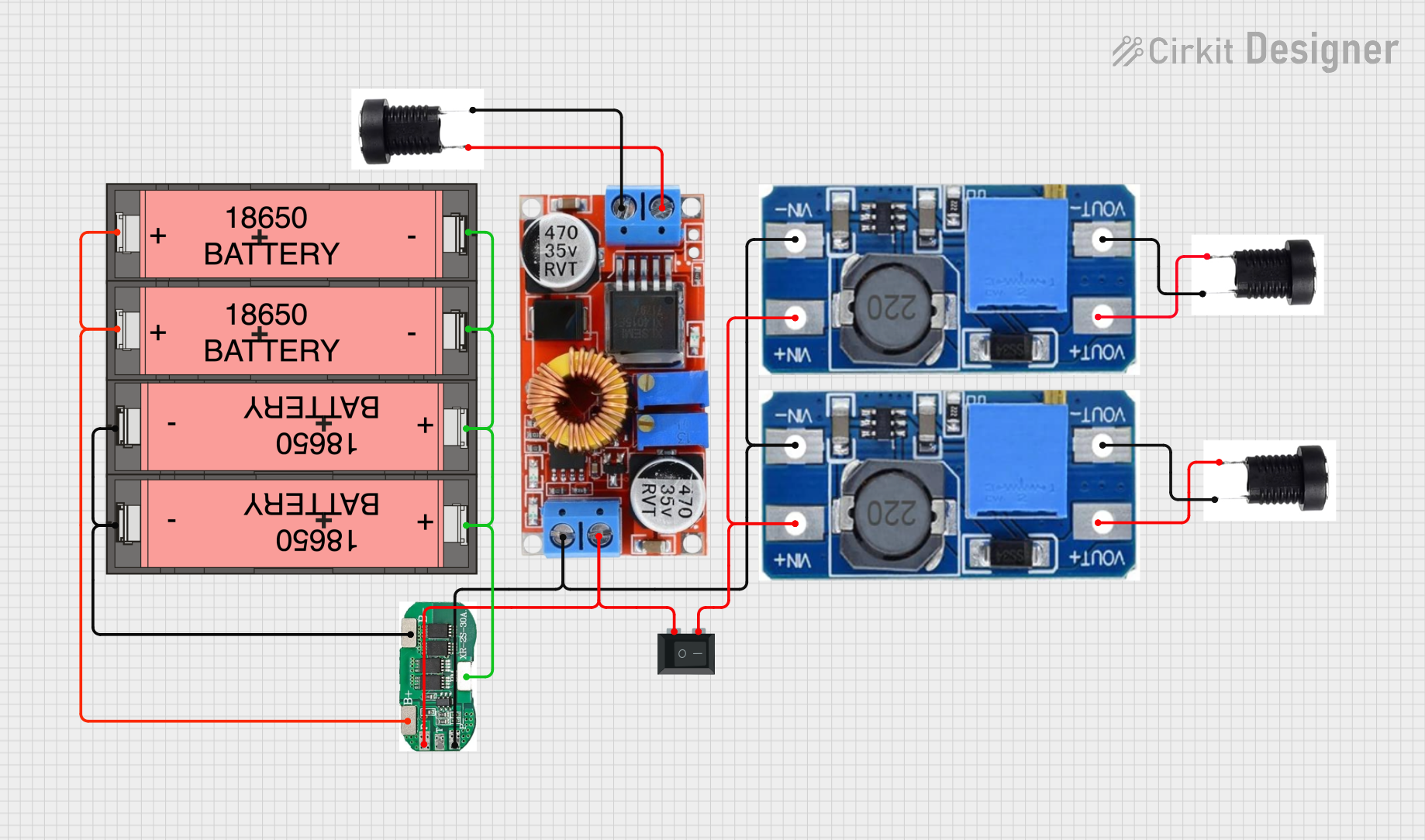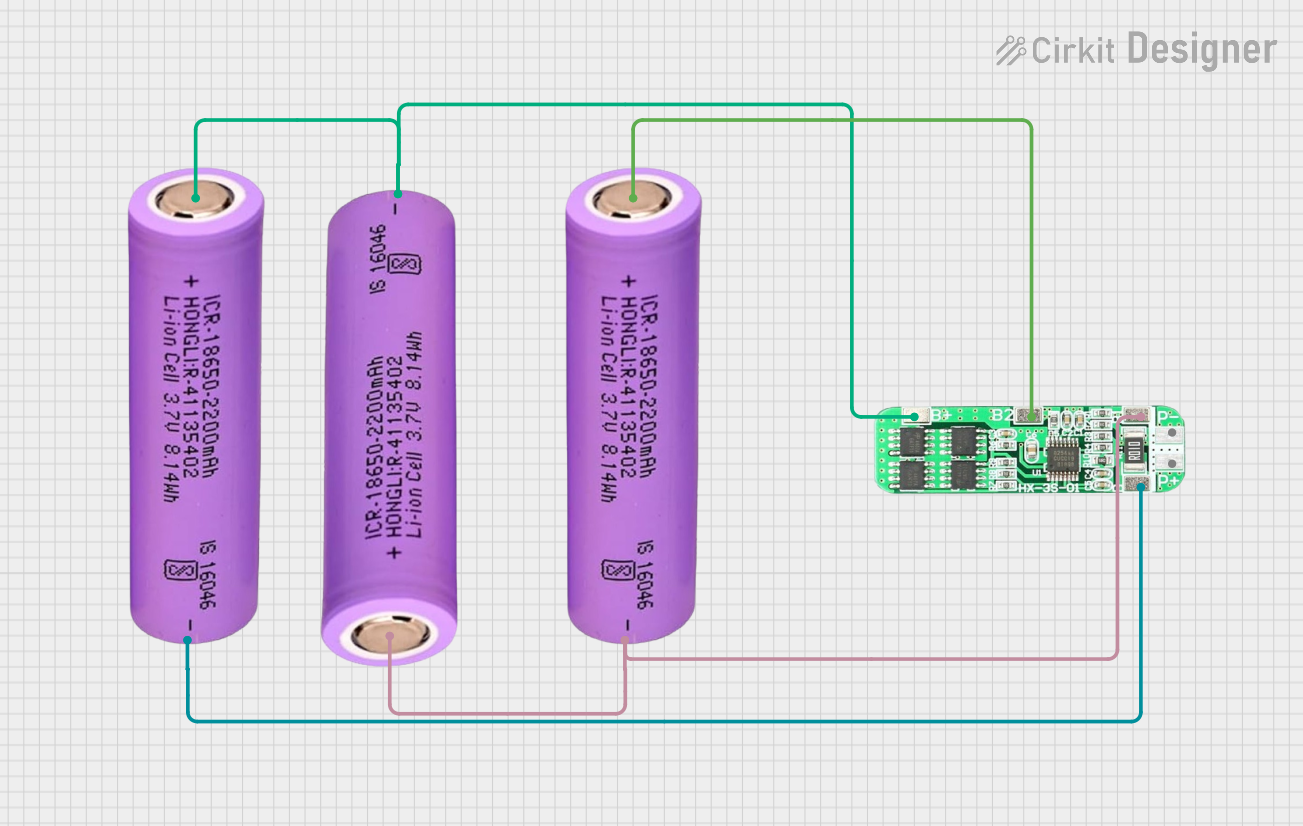
How to Use BMS 1S1P 3.7V 3A (for 18650): Examples, Pinouts, and Specs

 Design with BMS 1S1P 3.7V 3A (for 18650) in Cirkit Designer
Design with BMS 1S1P 3.7V 3A (for 18650) in Cirkit DesignerIntroduction
The BMS 1S1P 3.7V 3A is a Battery Management System designed for single series (1S) and single parallel (1P) configurations of 3.7V lithium-ion cells, typically 18650 cells. This component is essential for ensuring the safety and longevity of lithium-ion batteries by protecting them from overcharging, over-discharging, and short circuits. It is widely used in various applications, including portable electronics, DIY battery packs, and renewable energy systems.
Explore Projects Built with BMS 1S1P 3.7V 3A (for 18650)

 Open Project in Cirkit Designer
Open Project in Cirkit Designer
 Open Project in Cirkit Designer
Open Project in Cirkit Designer
 Open Project in Cirkit Designer
Open Project in Cirkit Designer
 Open Project in Cirkit Designer
Open Project in Cirkit DesignerExplore Projects Built with BMS 1S1P 3.7V 3A (for 18650)

 Open Project in Cirkit Designer
Open Project in Cirkit Designer
 Open Project in Cirkit Designer
Open Project in Cirkit Designer
 Open Project in Cirkit Designer
Open Project in Cirkit Designer
 Open Project in Cirkit Designer
Open Project in Cirkit DesignerTechnical Specifications
Key Technical Details
| Parameter | Value |
|---|---|
| Battery Configuration | 1S1P |
| Nominal Voltage | 3.7V |
| Maximum Current | 3A |
| Overcharge Protection | 4.25V ± 0.05V |
| Over-discharge Protection | 2.5V ± 0.1V |
| Short Circuit Protection | Yes |
| Operating Temperature | -20°C to 60°C |
| Storage Temperature | -40°C to 85°C |
Pin Configuration and Descriptions
| Pin Name | Description |
|---|---|
| B+ | Battery positive terminal |
| B- | Battery negative terminal |
| P+ | Power output positive terminal |
| P- | Power output negative terminal |
Usage Instructions
How to Use the Component in a Circuit
Connect the Battery:
- Connect the positive terminal of the 18650 cell to the B+ pin.
- Connect the negative terminal of the 18650 cell to the B- pin.
Connect the Load/Charger:
- Connect the positive terminal of the load or charger to the P+ pin.
- Connect the negative terminal of the load or charger to the P- pin.
Ensure Proper Connections:
- Double-check all connections to ensure they are secure and correct.
- Use appropriate wire gauges to handle the maximum current rating.
Important Considerations and Best Practices
- Avoid Overloading: Do not exceed the maximum current rating of 3A to prevent damage to the BMS and the battery.
- Temperature Monitoring: Ensure the operating temperature is within the specified range to maintain optimal performance.
- Regular Inspections: Periodically check the connections and the condition of the battery to ensure safe operation.
- Use Quality Components: Use high-quality 18650 cells and connectors to ensure reliability and safety.
Troubleshooting and FAQs
Common Issues Users Might Face
Battery Not Charging:
- Possible Cause: Overcharge protection activated.
- Solution: Check the battery voltage. If it is above 4.25V, allow it to discharge slightly before recharging.
Battery Not Discharging:
- Possible Cause: Over-discharge protection activated.
- Solution: Check the battery voltage. If it is below 2.5V, recharge the battery.
Short Circuit Protection Triggered:
- Possible Cause: Short circuit detected.
- Solution: Inspect the circuit for any short circuits and correct them before reconnecting the battery.
Solutions and Tips for Troubleshooting
- Check Connections: Ensure all connections are secure and correct.
- Measure Voltages: Use a multimeter to measure the battery voltage and ensure it is within the specified range.
- Inspect for Damage: Look for any physical damage to the BMS or the battery and replace if necessary.
Arduino UNO Example Code
If you are using the BMS with an Arduino UNO to monitor the battery voltage, you can use the following example code:
const int batteryPin = A0; // Analog pin connected to battery
float batteryVoltage = 0.0;
void setup() {
Serial.begin(9600); // Initialize serial communication
}
void loop() {
int sensorValue = analogRead(batteryPin); // Read the analog value
batteryVoltage = sensorValue * (5.0 / 1023.0) * 2; // Convert to voltage
// The factor of 2 is used because of the voltage divider
Serial.print("Battery Voltage: ");
Serial.print(batteryVoltage);
Serial.println(" V");
delay(1000); // Wait for 1 second before next reading
}
Note: Ensure you use a voltage divider to step down the battery voltage to a safe level for the Arduino's analog input.
By following this documentation, users can effectively utilize the BMS 1S1P 3.7V 3A to protect and manage their 18650 lithium-ion cells, ensuring safe and reliable operation in various applications.